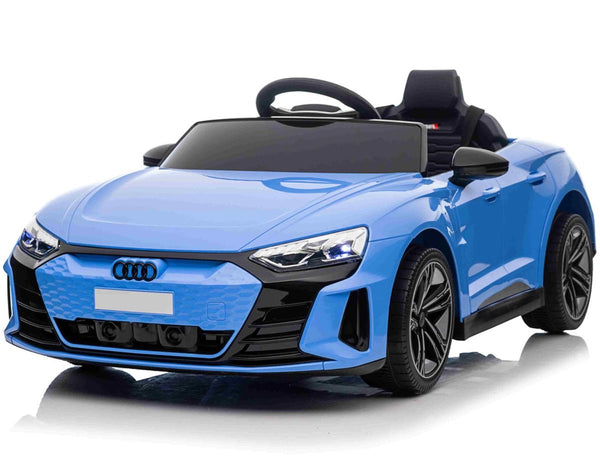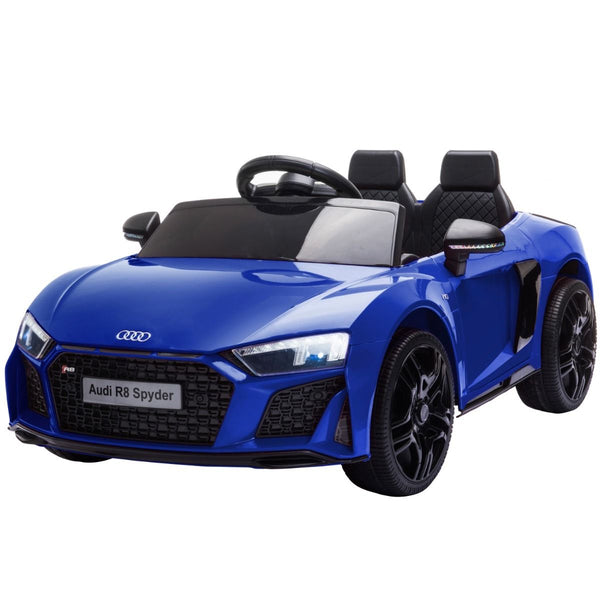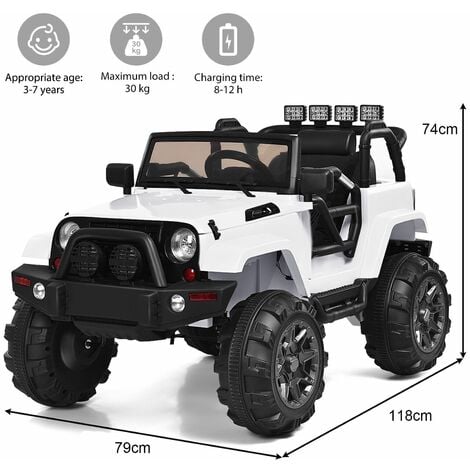Handy Tips To Selecting Ride On Toys
Handy Tips To Selecting Ride On Toys
Blog Article
What Do I Need To Know About Battery Life And Charging Time Of An Electric Ride-On Kids Car?
It is important to understand the life span of your battery for your electric ride-on car for children and how long it takes to charge. This will ensure you have uninterrupted playtime. What you should know - Battery Type
Most electric ride-on vehicles are rechargeable and utilize lithium-ion or led-acid batteries. Lithium ion batteries offer longer battery life than lead acid and are charged faster.
Battery Capacity
The battery capacity is expressed in ampere hours (Ah) and Watt hours (Wh). This determines the length of time an electric ride-on could run on one charge. Larger capacity batteries offer longer time to play before needing to recharge.
Run Time -
This is the amount of time an electric ride-on will run for following a single charge. It is contingent on a variety of factors such as battery capacity along with motor speed, terrain and rider weight.
Typical run times for electric vehicles vary from 30 minutes to 2 hours with a single charge. Some high-capacity battery packs may offer longer durations.
Time to Charge
Charging time is the time taken to fully recharge the battery after it has been depleted. Charging times may vary based upon battery capacity or charger specifications.
On average, charging times for electric ride-on vehicles vary between 8 and 12 hours to complete a charge. Some models, particularly those that use lithium-ion batteries might have faster charging times.
Follow the instructions for charging that are provided by the manufacturer in order to ensure battery safety and long-term durability. Undercharging or overcharging the batteries can have an adverse effect on their performance and longevity.
Method of Charging
Electric ride-on vehicles are usually equipped with a charger which plugs into an ordinary home outlet. Certain models come with fast-charging features, or come with a charger that changes its charging rate based on the battery state.
To avoid battery damage or harm to electrical systems, ensure the charger with the ride on car is compatible with the charging port.
Additional Batteries -
Some electric rides-on-cars offer an possibility to purchase additional batteries or spare batteries for extended playtime. Extra batteries allow you to recharge batteries that are depleted with fully charged batteries, which can reduce downtime.
When you know the charging times and battery life of your electric vehicle for children, your child can enjoy endless fun and adventures. Battery life can be increased by charging the battery regularly and using proper charging techniques. See the top rated ride on toys for website tips including childrens digger, car toy toy, race car toy car, childs electric ride on car, toy cars toy car, childrens ride on, childs electric ride on car, pedal car, remote control childrens car, ride on digger and more. . 
What Are Some Features Available On The Ride-On Cars?
Ride-on vehicles come with a variety of features and accessories that improve the fun experience and create a more realistic and engaging driving sensation for children. Here are a few typical features that come with the ride-on car accessories:
Many ride-on cars are equipped with headlights that work and highlight the way ahead, which adds the illusion of realism and clarity, particularly when driving in dimly lit areas or at night.
Horn Sounds
Ride-on vehicles often include a horn, or steering wheel which emits horns sound when it is pressed. It allows children to alert other people and pretend to drive in a vehicle.
MP3 Player Compatibility -
Some ride-on cars are equipped with MP3 player compatibility, allowing children to connect their mobile music devices via an additional input or USB port. This allows them to listen to their favorite music while driving. This adds value of the ride-on vehicle.
Realistic Engine Noises -
Ride-on vehicles may have built-in sound effects that mimic realistic engine noises and revving sounds. They can also be used to simulate acceleration sounds, which add to the driving experience by making children feel like they're driving a real car.
Remote Control
Some ride-on vehicles include a remote control for parents that lets parents use the car from a distance and offer assistance or supervision whenever needed. Parents can steer the ride-on vehicle, control the speed of it, and even stop it remotely. This lets them feel safe and secure.
Seat Belts
Safety harnesses and seat belts are often included in vehicles that ride on. They offer an extra layer of safety, and prevent the child from falling during play.
Doors for Working -
A variety of ride-on cars feature doors with a functional design that can be easily closed and opened. They allow children to leave or enter the car quickly and realistically.
Storage Compartment
Some ride on cars have a trunk in which children can store their small toys or snacks. It adds to the flexibility of play.
Adjustable Seats -
Some of the ride-on vehicles include seats that can be adjusted. They are able to be moved forward or backwards to fit children of various heights. Also, they could give more room as kids grow.
Remote Emergency Stop Buttons
Some ride-on vehicles include remote control functions, as well as a remote emergency button. This allows parents to immediately stop the vehicle in the event of an emergency or when it's dangerous.
These features, accessories, and other parts contribute to the overall fun real-life, safety, and enjoyment of riding on vehicles. Children can play imaginatively and experience exciting adventures while driving. Have a look at the top rated read this on McLaren kids car for site recommendations including toy with car, ride electric car, toy with car, ride ons, riding digger, toy and car, electric toy car, car electric ride on, digger ride, childrens electric ride on and more. . 
What Are The Different Kinds Of Remote Controlled Cars For Children? What Are The Pros And Cons Of These Vehicles?
Remote control vehicles for children are also known as RC or remote-controlled vehicles are available in a range of styles, sizes and prices. They're designed to meet the needs of different tastes and budgets. Here's a listing of the different kinds of remote-controlled kids' cars, including their dimensions, prices as well as pros and cons.
Electric RC Cars – These are battery-powered, remote-controlled vehicles that can be used both outdoors and indoors. The cars come in various designs, including buggies and trucks.
Nitro RC Cars – Gas powered remote controlled cars that have better performance but require greater maintenance. They are generally larger and more costly than electric RC car.
Scale Models can be controlled remotely which include vehicles, trucks and aircrafts. Scale models come in various sizes, from 1 10 to 1-24, with larger scales offering more detail and realism.
Sizes -
Remote-controlled cars for kids are available in different sizes. From tiny to full-size replicas, they come in all shapes and sizes. The size of the car can influence the performance of a vehicle in terms of speed, as well as the handling characteristics.
Micro-sized cars are small and light. They are ideal to use indoors with smaller children. Cars with bigger sizes have more power, durability and are thus perfect for off-road and outdoor racing.
Prices
Prices for remote-controlled children's vehicles vary according to factors like size, features and brand.
Micro-sized electric cars can be purchased for $20-$100, and larger electronic and nitro-powered models can cost between $100 and $500 or more.
The cost of scale models and hobby grade RC vehicles can vary from a few hundred dollars to over a thousand dollars depending on their performance and precision.
What are the pros and cons?
Pros -
Adults and kids can both enjoy the excitement and fun of remote-controlled vehicles.
Skill Development - Operating an RC car assists children in developing hand-eye coordination, spatial awareness, and problem-solving capabilities.
Social Interaction. Cars with RC encourage social interaction and can be enjoyed by both friends and family.
Customization - A lot of RC vehicles are able to be upgraded using accessories and upgrades, which will improve their performance as well as appearance.
Cons
Cost - A high-quality model with advanced features can cost a lot, particularly for hobby grade models.
Learning Curve: Operating a RC car takes some practice and. Children younger than 10 may be unable to manage the controls.
Maintenance - Vehicles with RC engines require regular maintenance. This includes cleaning, lubrication, as also periodic repairs and replacements of parts.
Safety Concerns RC cars pose a safety risk and could lead to electrical hazards, accidents and falls when used without adult supervision.
The best remote control children' cars are those that provide a stimulating and educational experience for children of all different ages. When choosing the right model for your child it is important to be aware of a range of aspects, including dimensions, features for price and safety. These RCs are suitable for older kids and enthusiasts and simpler models can be a good fit for younger children and beginners. Have a look at the best ride on toys kidscars.co.uk recommendations for site advice including electric two seater cars, toy cars toy car, kids electric cars, car toy toy, electric car ride, electric toy car, toy toy cars, remote control childrens car, electric ride along car, ride on digger and more. .